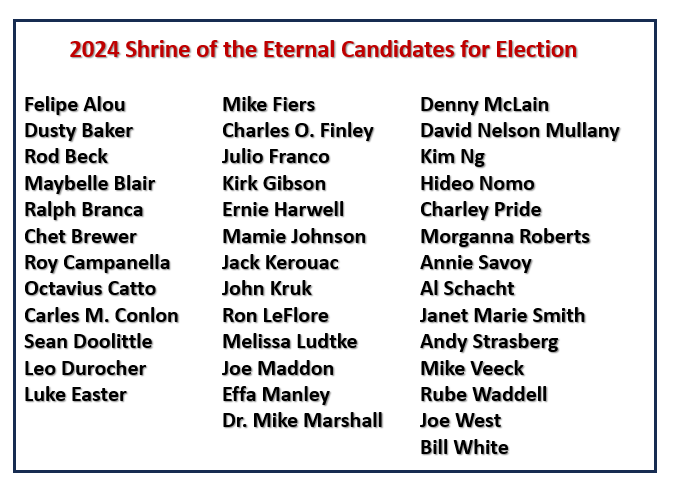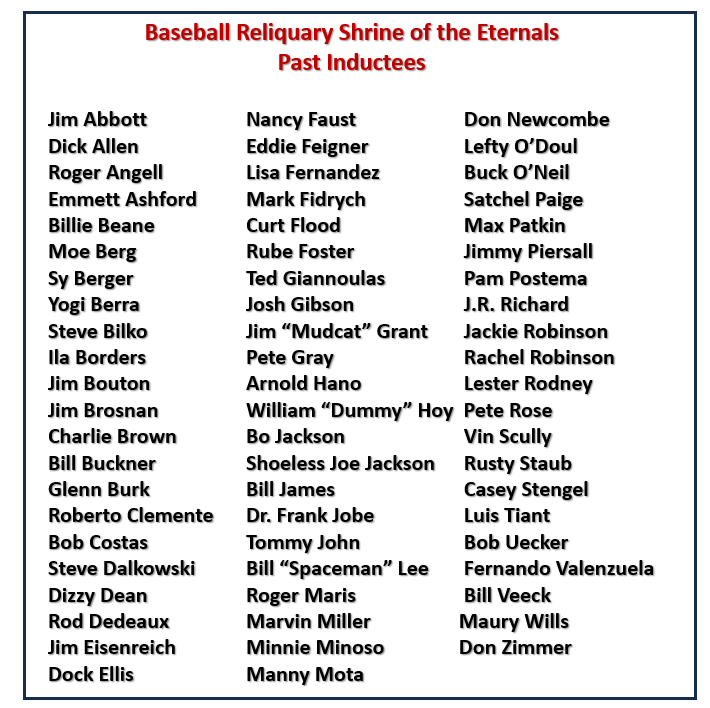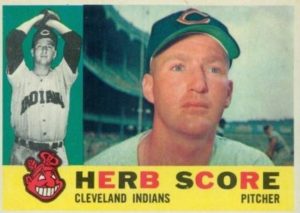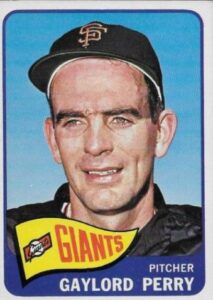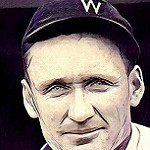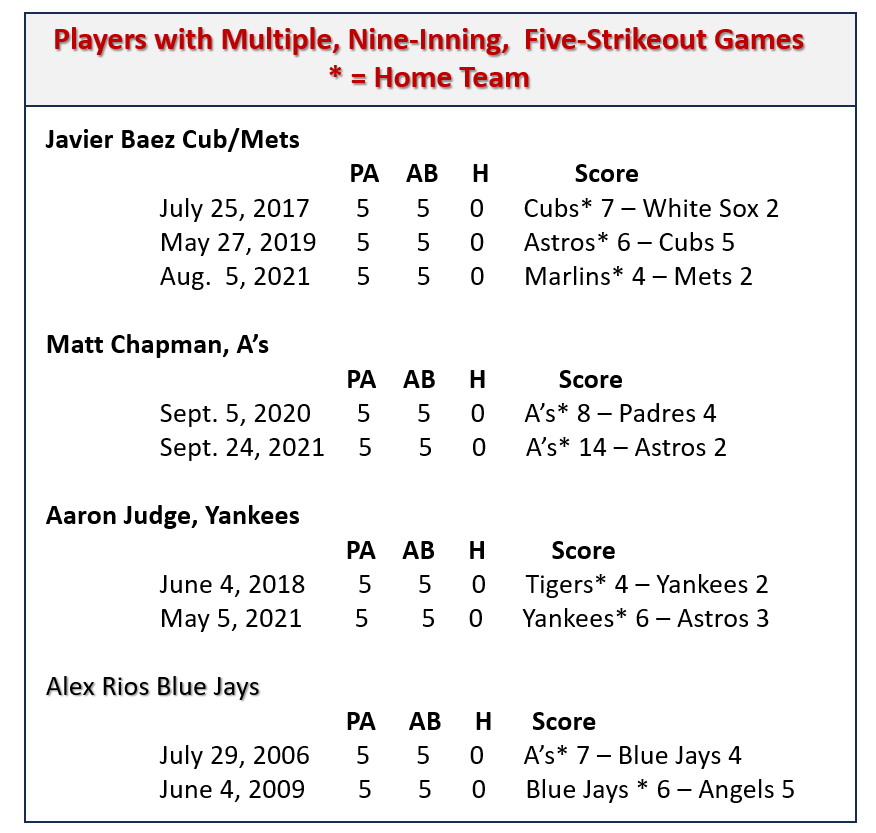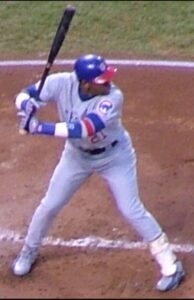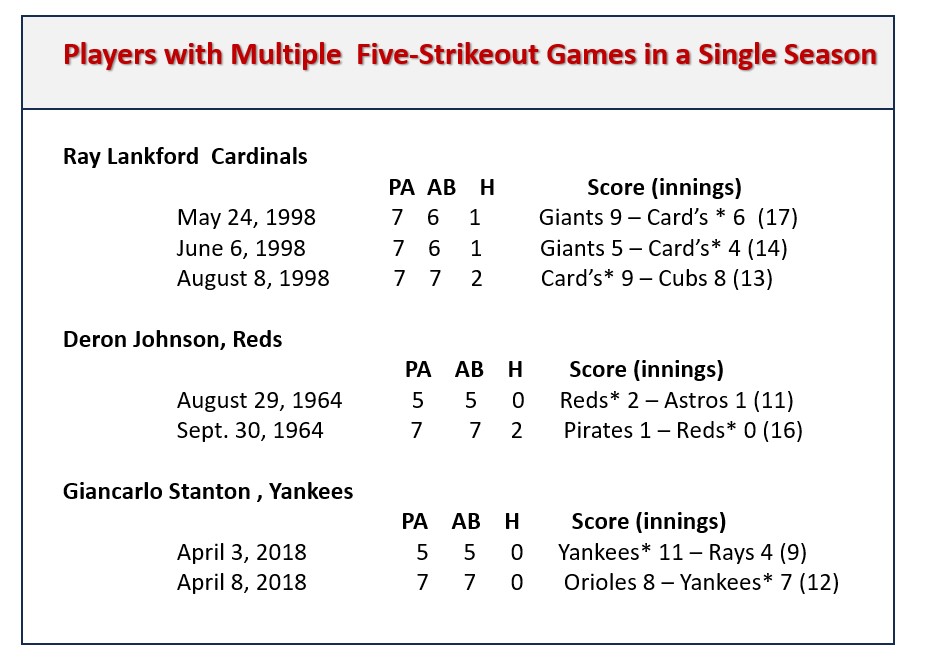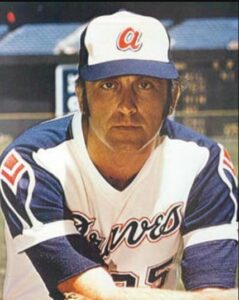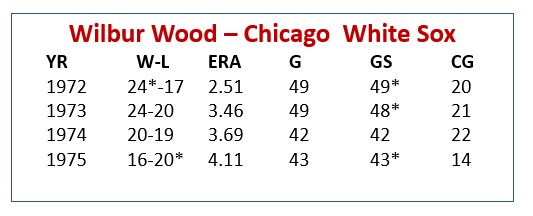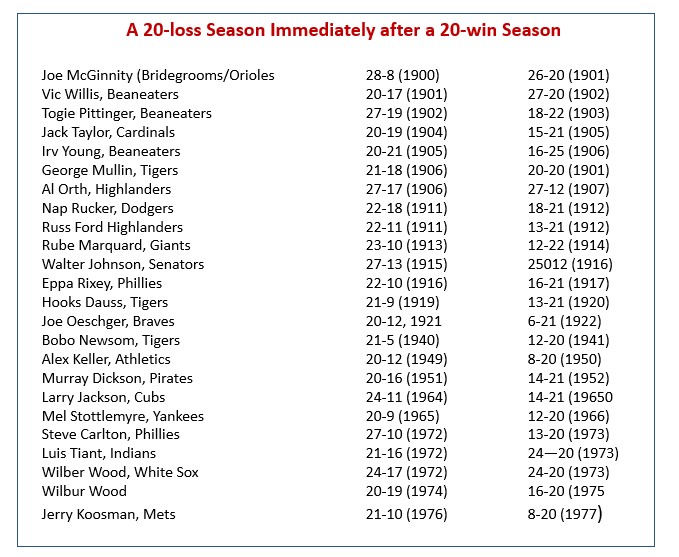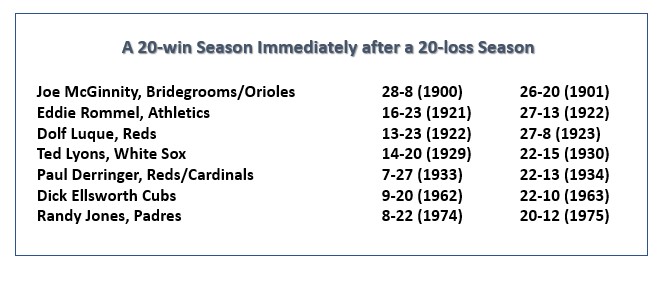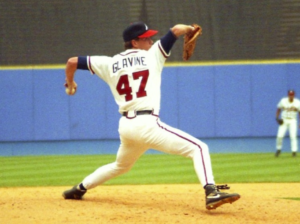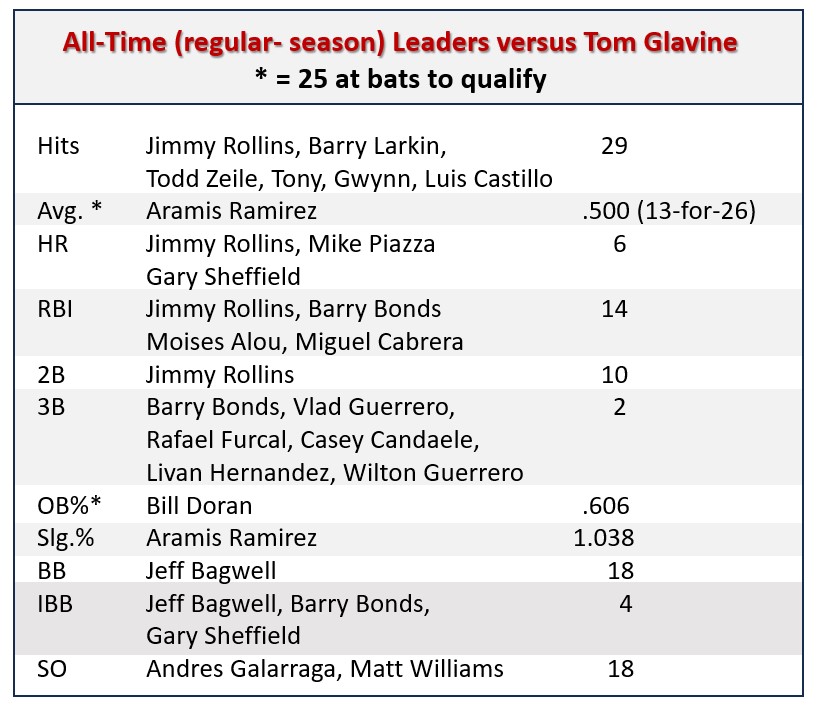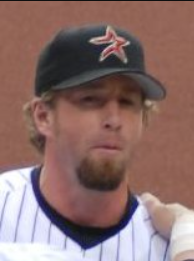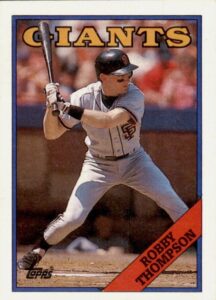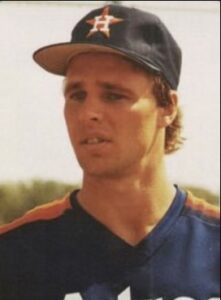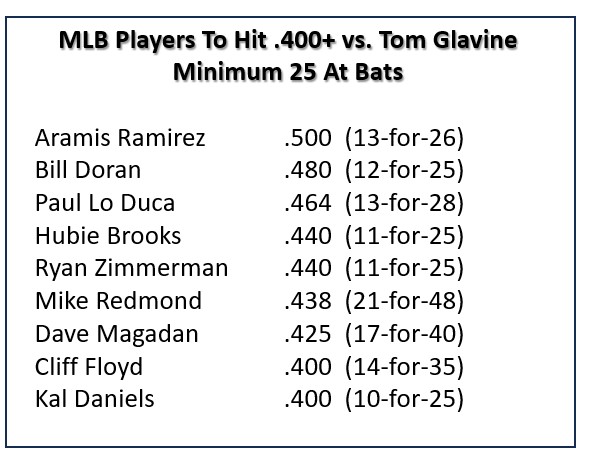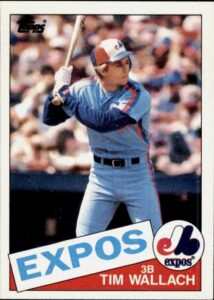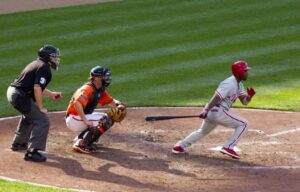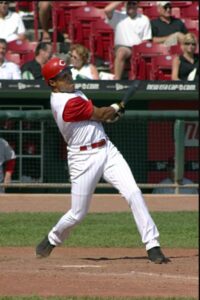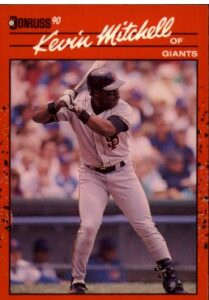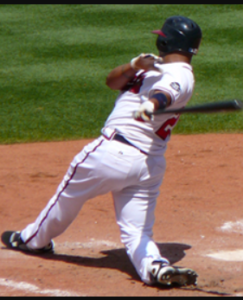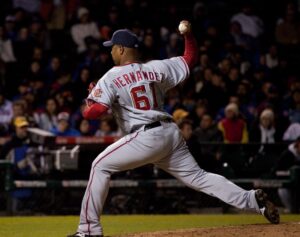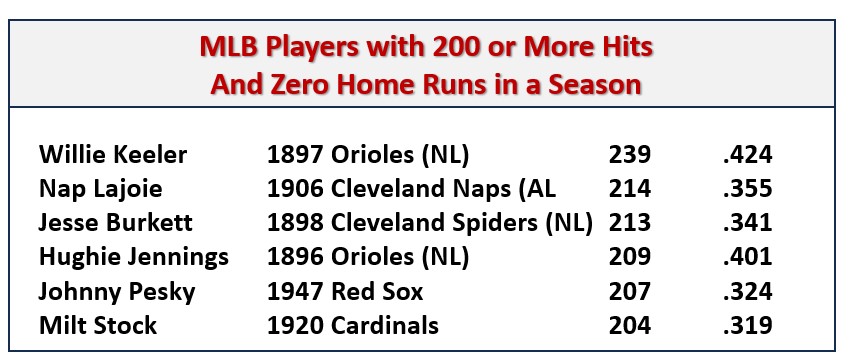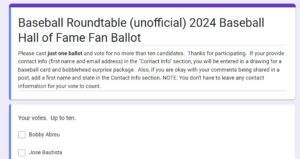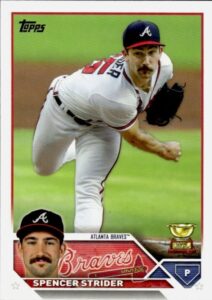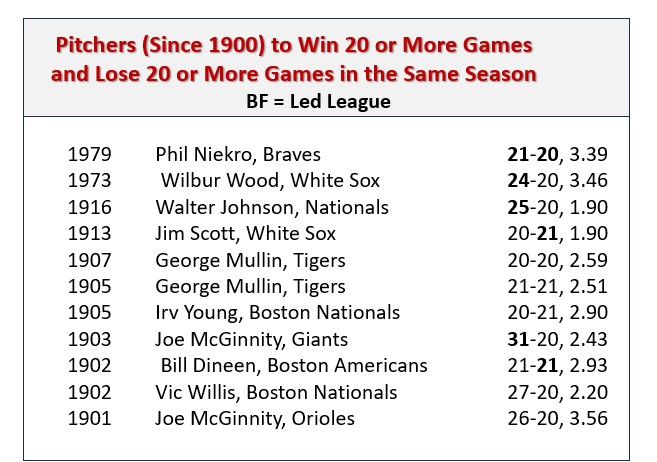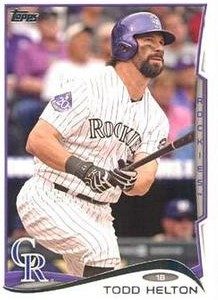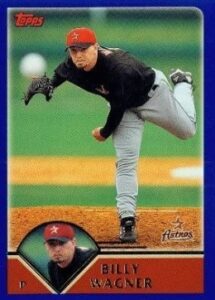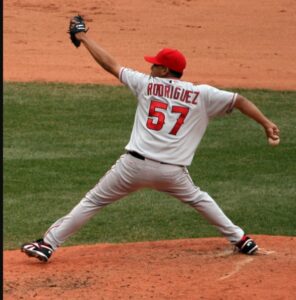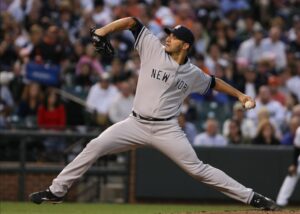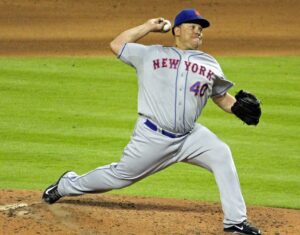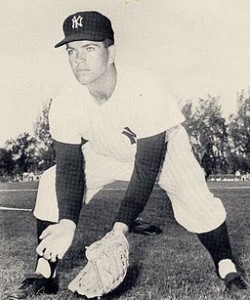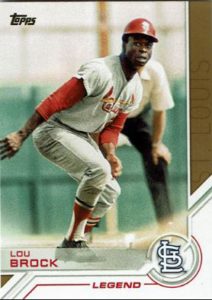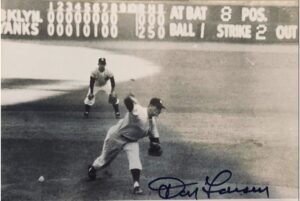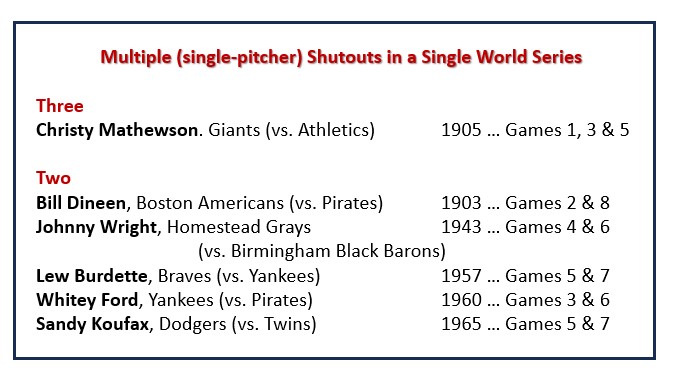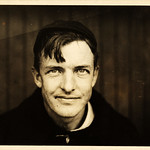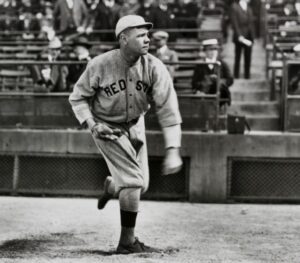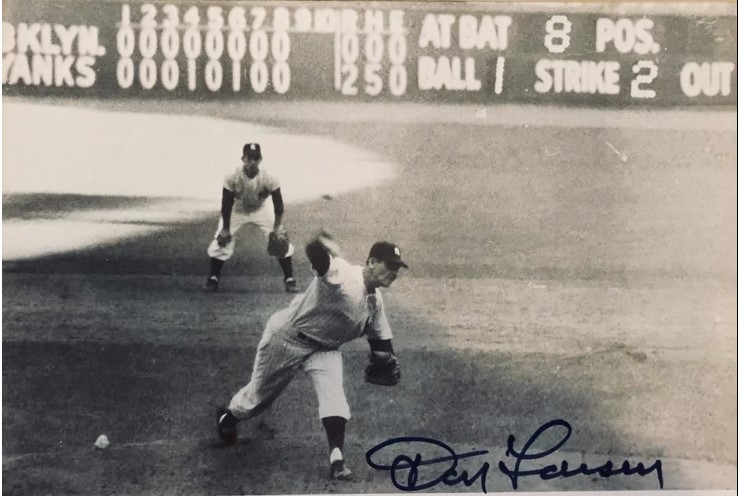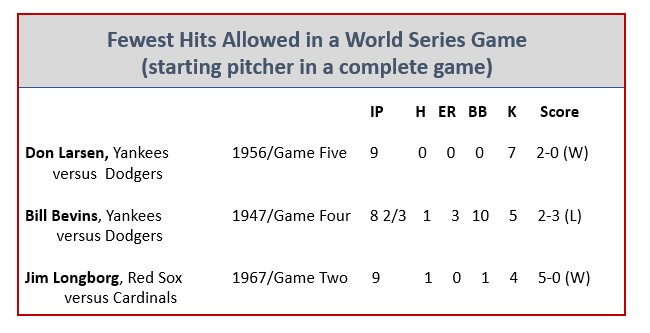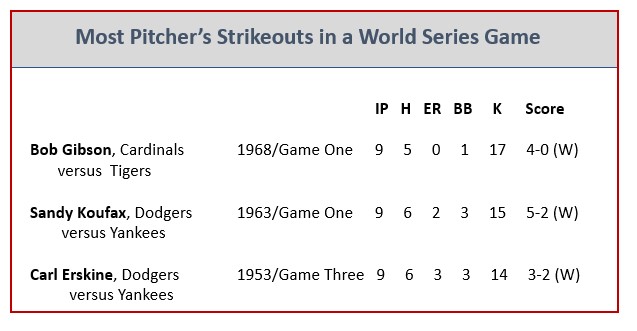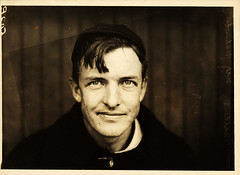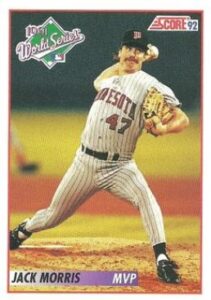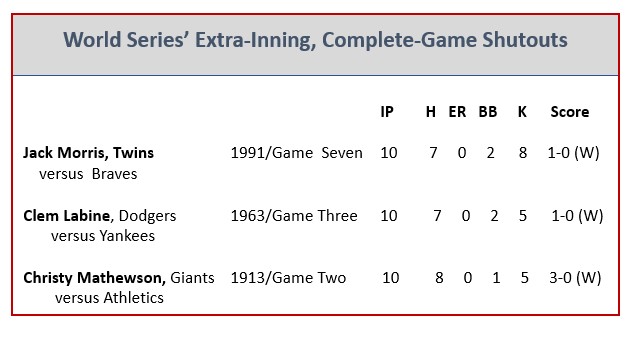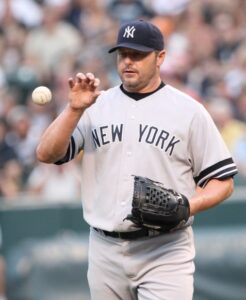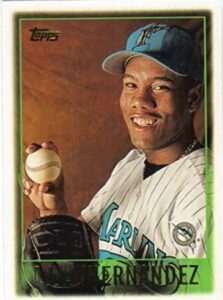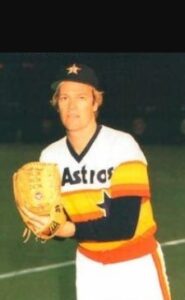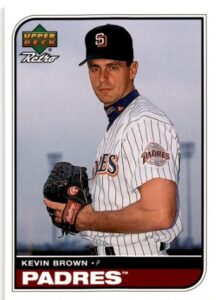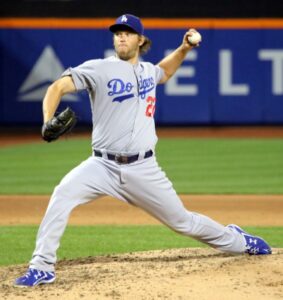 Early this week, a welcome baseball gift in the mail – my 2024 Baseball Reliquary Shrine of the Eternals Ballot – which means I can look forward to some joyous time pondering the character and characters that helped shape the history of our grand game (as presented in the always informative and creative biographies included with the ballot).
Early this week, a welcome baseball gift in the mail – my 2024 Baseball Reliquary Shrine of the Eternals Ballot – which means I can look forward to some joyous time pondering the character and characters that helped shape the history of our grand game (as presented in the always informative and creative biographies included with the ballot).
I’ll take a look at my choices from this year’s ballot in a bit, but first – for those not familiar with The Baseball Reliquary – a little background.
 The Baseball Reliquary is an organization of fans dedicated to the free-spirited celebration of the human side of baseball’s history and heritage. The Reliquary defines itself as “an educational organization dedicated to fostering an appreciation of American art and culture through the context of baseball history and to exploring the national pastimes’ unparalleled creative possibilities.”
The Baseball Reliquary is an organization of fans dedicated to the free-spirited celebration of the human side of baseball’s history and heritage. The Reliquary defines itself as “an educational organization dedicated to fostering an appreciation of American art and culture through the context of baseball history and to exploring the national pastimes’ unparalleled creative possibilities.”
Reliquary (rel′ə kwer′ē)
Noun- a container or shrine in which sacred relics are kept and displayed for veneration.
While its “home” is at Whittier College (also home to the Institute for Baseball Studies), the Reliquary is more than just a place. The Reliquary really resides in the hearts of its founders, members, contributors and honorees – who all are important parts of the organization’s joyful (often irreverent, but always well-informed and fan-centric) celebration of all things baseball. This celebration is fueled through The Reliquary’s Shrine of the Eternals, collection of historic artifacts, exhibitions and extensive baseball-related research collection – books, periodicals and papers from distinguished authors, historians and journalists.
The Whittier (CA) College Institute for Baseball Studies is the first humanities-based baseball research center associated with a U.S. college or university,
The Shrine of the Eternals
The Shrine of the Eternals is the Reliquary’s best-known element and its honorees include (among others) a one-armed major league outfielder, a pitcher who once threw a no-hitter while high on LSD, a team owner who sent a midget to the plate, a man in a chicken suit, a member of Major League Baseball’s 3,000-hit club, a manager who won eight World Championships, a cartoon character who pitched his team to more than 1,000 losses, more than one best-selling author, a statistical wizard and even the sports editor of the Daily Worker (American Communist Party newspaper). The honorees are each unique in their roles in – and contributions to – the national pastime, but they all share the distinction of having made a significant impact on the game.
It’s a shrine to “our” great game that connects:
- Mark “The Bird” Fidrych and the San Diego Chicken;
- Dr. Frank Jobe and Dr. Mike Marshall (not to mention Dock Ellis);
- Bob Uecker and Yogi Berra;
- Luis Tiant and Charlie Brown;
- Roberto Clemente and Pete Gray;
- Rube Waddell and Bill “Spaceman” Lee.
This year’s candidates range from players like Rube Waddell, Felipe Alou, Mike Marshall and Julio Franco to such luminaries as renowned baseball photographer Charles M. Conlon, Wiffle Ball inventor David Nelson Mallany, umpire Joe West, “Kissing Bandit” Morganna Roberts, broadcaster Ernie Harwell and baseball executive Kim Ng.
You get the idea.
Note: The Reliquary also recognizes distinguished service to baseball by a fan (The Hilda Award) and contributions to the preservation of baseball history (The Tony Salin Award).
Artifacts
The Baseball Reliquary’s Collection of what The Roundtable would term “art-ifacts” is as diverse as its roster of Shrine honorees. The collection includes (but is “oh-so not limited” to) the Walter O’Malley Tortilla, the Roger Bresnahan Potato, the Eddie Gaedel Jock Strap, a Babe Ruth cigar, a Mother Teresa autographed baseball (a whole case actually), a heat-twisted 45-rpm record from the White Sox’ ill-fated Disco Demolition Night; and a San Diego Chicken game-worn costume.
Exhibits
The Baseball Reliquary’s Exhibits have covered such varied topics as Latino and Black baseball history, baseball in foreign policy, baseball literature and art, a celebration of baseball cards, and even the self-defining “Lasordapalooza.”
Join Now and Vote
New members joining The Baseball Reliquary through its website ( www.BaseballReliquary.org ) by April 22, will receive a copy of the 2024 Shrine of the Eternals biographies and ballot and the opportunity to vote, by April 30, for this year’s nominees.
—–THE SHRINE OF THE ETERNALS 2024 BASEBALL ROUNDTABLE BALLOT—–
Now, on to the Shrine of the Eternals. Before I share my ballot, here’s what the Reliquary has to say about this honor.
“Similar in concept to the National Baseball Hall of Fame, the Shrine of the Eternals differs philosophically in that statistical accomplishment is not the principal criterion for election. The Baseball Reliquary believes that the election of individuals on merits other than statistics and playing ability will offer the opportunity for a deeper understanding and appreciation of baseball than has heretofore been provided by “Halls of Fame” in the more traditional and conservative institutions.
“Criteria for election shall be: the distinctiveness of play (good or bad); the uniqueness of character and personality; and the imprint that the individual has made on the baseball landscape. Electees, both on and off the diamond, shall have been responsible for developing baseball in one or more of the following ways: through athletic and/or business achievements; in terms of its larger cultural and sociological impact as a mass entertainment; and as an arena for the human imagination.”
Each year, the Baseball Reliquary submits a list of candidates to its members and the top three vote-getters are honored. Reliquaries can vote for up to nine nominees.
Here’s a look at those who are getting my votes for this year.
CHARLES M. CONLON (1868-1945) … Picture Perfect
Charles M. Conlon is responsible for some of the most iconic images from baseball history. From 1904 to 1942, he documented the course of the national pastime (as a hobby), while working as a proofreader for the New York Evening Telegram (later the World-Telegram). Carrying a large Graflex camera and cumbersome glass plate negatives to the ballpark, Conlon produced at least 30,000 portraits and action photos, capturing history in black and white.
Although his photos appeared regularly in the Spalding and Reach Base Ball Guides, The Sporting News, and Baseball Magazine, Conlon’s contribution to the images and history of the game really came to the fore with the publication of Neal and Constance McCabe’s books: Baseball’s Golden Age: The Photographs of Charles M. Conlon (1993); and The Big Show: Charles M. Conlon’s Golden Age Baseball Photographs (2011).
The McCabe’s, making the case that Conlon ranks among the masters of documentary photography, assert: “The ballpark was Conlon’s universe, an inexhaustible source of unforgettable images: a catcher’s mangled hand, a madman kicking up his heels, an umpire lost in thought. He documented baseball obsessively at a time when critics of photography—had they known of his existence—would have questioned his sanity for taking thousands of photographs of so trivial and ephemeral a subject.”
Conlon gets my vote for contributing so significantly to the visual history of the game.
______________________________________
SEAN DOOLITTLE (1986- ) … A Stand-Up Guy
Sports Illustrated called reliever Sean Doolittle, “the conscience of baseball.” He was a VOCAL and ACTIVE advocate for the rights of workers, women, immigrants, the LGBTQ community and veterans, as well as against racism and gun violence.
In his own words “As a kid, I remember my parents would say, “Baseball is what you do, but that’s not who you are’ – like that might be my job, but not the end-all, be-all. I feel like I might even be able to use it to help other people. Sports are like the award for a functioning society.”
Among the two-time All Star’s many activities of conscience were: organizing a 2015 Thanksgiving dinner for Syrian refuges; writing a 2019 Washington Post op-ed piece in support of union workers; boycotting the 2019 World Series Champion Nationals’ visit to the White House; penning a Sports Illustrated column urging the Veterans Administration to expand mental health services for veterans; using social media to address the topics of racial injustice and gun violence; and much, much more.
Doolittle, who retired from the field in 2023, played in 11 MLB seasons (2012-2022 … Athletics, Nationals, Reds, Mariners). He appeared in 463 games and put up a record of 26-24, 3.20, with 112 saves and 522 strikeouts in 450 2/3 innings. He had five seasons of 20 or more saves.
Doolittle’s willingness to stand up and speak out for what he believes is right make him a solid Shrine of the Eternal’s candidate. Whether you agree with Doolittle’s opinions or not, as Pete Dreier wrote in the opening of Doolittle’s Shrine of the Eternals Ballot Bio, “Sean Doolittle embodies the Reliquary’s rebellious, iconoclastic and irreverent spirit.”
______________________________________
LUKE EASTER (1915-79) – Scrambling Some Eggs
“Luscious” Luke Easter was one of the most prodigious home run hitters of all time. His titanic blasts were known as “Easter Eggs.” Among his notables, Easter:
- Was the first player to a homer into the farthest reaches of center field in the Polo Grounds;
- Hit the longest home run in the history of old Cleveland Municipal Stadium – clearing the distant right field scoreboard; and
- Was the first player to hit a drive over the CF scoreboard in Buffalo’s Offerman Stadium (at age 42), proving it was no fluke by hitting the second drive to ever to clear the scoreboard just a month later.
Easter began his baseball career in 1937, as an OF/1B and cleanup hitter for the St. Louis Titanium Giants (a company team) – and didn’t play his final game until 27 years later. Everything about the 6’4”, 240-pound Easter was big – his stature, his bat, his love of the game, his love of life, his relationship with teammates and the fans and, later, even his Buick.
While he began showing his prowess at the plate in the late 1930’s, he really began carving his name into baseball history after getting out of the military in 1943. In 1945, he starred with the barnstorming Cincinnati Crescents (for whom he hit the Polo Grounds home run noted above).
In 1947, he joined the Homestead Grays, where he hit .311, with 10 home runs in 219 at bats. Research by Society for American Baseball Research Member Justin Murphy indicates Easter followed that up by hitting .363 for the Grays and tying teammate Buck Leonard for the Negro National League (NNL) lead in home runs (13) – helping the Grays to the NNL World Series Championship.
In 1949, Easter signed with the Cleveland Indians and made (what was then considered) his major league debut on August 1 of that season – at age 34 – just the eleventh black player in the major leagues. (MLB has since declared the Negro Leagues from 1920-48 to be major leagues.) While he hit only .222 in 54 games for the Indians, due in part to an injured knee, Easter showed his (already long-proven) power by going .363-25-92 in 80 games at Triple-A San Diego.
Then, in 1950, he hit .280-28-107 in 141 games for the Indians – earning recognition from the Sporting News as the AL’s Most Outstanding Player. In 1951, he went .270-27-103 for the Tribe and, in 1952, .263-31-97. Age and injuries were already taking their toll, however, and on May 4, 1954, the 38-year-old Easter played his final MLB game.
Ah, but Luscious Luke was not done. He played on in the minor leagues until 1964 – putting up four seasons of 30 or more home runs and 100+ RBI – earning his way into the International League Hall of Fame.
Over his career, Easter also played winter ball in Puerto Rico, Venezuela, Mexico and Hawaii. A Winter-League star, Easter hit .402 for Mayaguez in the Puerto Rican League in 1948-49 (winning league MVP honors); led the Mexican Pacific Coast League (for Hermosillo) in homers in 1954-55; and lead the Puerto Rican Winter League in homers in 1955-56 and 1956-57.
Why does Luke Easter get my vote? Consider that non-other than Bill James rated him the second-best Negro Leagues’ first baseman of all time (behind only Buck Leonard) and Al Rosen (a teammate of Easter on the Indians, as well as a four-time All Star, two-time AL home run leader, 1953 American League MVP and 1989 National Executive of the Year) maintained, “Had Luke come up to the big leagues as a young man, there’s no telling what numbers he would have had.”
____________________________
JULIO FRANCO (1958 –) … One For The Ages (Aged?)
If you believe “Old Guys Rule” – Julio Franco should be your king.
Franco is the oldest player to homer in an MLB game. Franco went deep at age 48 years, 254 days, hitting a two-run shot off Arizona’s Randy Johnson as Franco’s Mets topped the Diamondbacks 5-3 on April 26, 2006. In that same game, Franco also became the second-oldest MLB player to steal base – and, thus, the oldest player to homer and steal a base in the same game.
Franco is also the:
- Oldest player to hit a grand slam (46 years, 308 days) – connecting as a pinch hitter for the Atlanta Braves in a 7-2 win over the Marlins on June 27, 2005;
- Oldest player to record a multi-homer game, belting a pair of homers on June 18, 2005 (age 46 years, 299 days), as his Atlanta Braves topped the Reds at Great American Ball Park. Franco started at first base and went two-for-four with two homers and three RBI;
- Oldest player to hit a pinch-hit home run, in the eighth inning of a Mets’ 7-2 win over the Padres at San Diego (April 20, 2006 – 47 years, 240 days);
- Oldest player to steal two bases in a game (and in an inning) – (June 16, 3005 – 46 years, 297 days); and
- Oldest player to be put into a game as a pinch runner (July 29, 2006 – 47 years, 340 days) … he delivered, promptly stealing second base, going to third on an errant throw.
From 1982 to 1994, Franco played primarily as a middle infielder and DH for the Phillies, Indians, Rangers and White Sox – making three All Star teams (MVP of the 1990 All Star Game), earning five Silver Slugger Awards and leading the American League in hitting at .341 for the Rangers in 1991. In that 1991 campaign, Franco collected 201 hits, 15 homers, 78 RBI, 108 runs scored and 36 steals in 45 attempts. At season’s end, he had hit .300+ in five of the previous six seasons – the lone exception being .296 in 1990.
In 1994, when the remainder of the MLB season was lost to a strike, Franco was in the midst of possibly his best campaign. After 112 games, he was hitting .319, with 138 hits, 20 home runs, 98 RBI, 72 runs scored, and eight steals. Franco was determined to keep swinging the bat and signed to play in Japan with the Pacific League Chiba Lotte Marines. In the 1995 Japanese season, Franco hit .306 and won the Pacific League’s equivalent of the Gold Glove at first base.
Franco returned to MLB in 1996, joining the Cleveland Indians, hitting .322-14-76 in 112 games. In August of the following season, the Indians released Franco – who was hitting .284-3-25 at the time. He finished the 1997 campaign with the Brewers, hitting .241 in 14 games with Milwaukee.
In 1998, at age 39, Franco was back in Japan playing for Chiba Lotte; where he hit .290, with 18 home runs and 77 RBI in 131 games. Then, in 1999, he celebrated turning 40 (when most ballplayers are retired or coaching) by hitting for a .423 average in the Mexican League and getting one late-season MLB at bat with Tampa Bay.
As he moved into his forties, Franco was far from finished as a player. He played in South Korea in 2000 (age 41), hitting .327-22-110. In 2001, the well-traveled batsman was back in the Mexican League (Mexico City Tigers), where stellar play (a .437 average in 110 games) earned him a spot on the Atlanta Braves’ roster in September. Franco hit .300, with three home runs and 11 RBI over the final 5 ½ weeks of the MLB season.
From 2001 to 2007, the ageless wonder – professional hitter and pretty darn good first sacker – played for the Braves and Mets. From 2001 through 2006 – ages 42 to 47 – Franco averaged .290 over 581 games. He hit .222 in 55 games in his final MLB season – 2007 with the Mets and Braves.
Even at 49, Franco was not done battering baseballs. In 2008, he could be found at first base with the Tigres de Quintana Roo of the Mexican League (where he hit .250 in 36 games). That season, Franco – after 23 Major League seasons and 30 years after his first professional baseball game – announced his retirement as a player.
Oops? Not so fast. In 2014, at the age of 55, he appeared in seven games for the Fort Worth Cats of the independent United League – going six for 27. Then in 2015, Franco was signed as player-manager of the Ishikawa Million Stars of the Japanese independent Baseball Challenge League (identified as a semi-pro league).
In 23 MLB seasons, Franco hit .298, with 2,586 hits, 173 homers, 1,285 runs, 1,194 RBI and 281 stolen bases. He also collected 618 minor league (U.S) hits, 316 in the Mexican League, 286 in Japan, 267 in the Dominican Winter League and 156 in South Korea and six in independent ball (U.S.).
Forever young, Mr. Franco – baseball’s Energizer Bunny – got my vote.
_____________________________________________
MAMIE “Peanut” JOHNSON (1935 – 2017) … Playing Big
Mamie Johnson was one of three females to play for the Indianapolis Clowns during the declining days of the Negro Leagues (and the only woman ever to pitch in the Negro Leagues). At 5’3” Johnson looked a little small for the baseball diamond, but she played above her height. Johnson took the mound to the Clowns for three seasons (1953-55), running up a 33-8 record – utilizing a deceptive fastball, curve, change, screwball and knuckleball. Her exploits are chronicled in the children’s book “A Strong Right Arm: The Story of Mamie ‘Peanut’ Johnson,” by Michelle Y. Green.
________________________________
MIKE MARSHALL (1943 – ) … Is There A Doctor in The House?
This former major-league reliever (14 seasons … 1967, 1969-81) earned three college degrees, including a Ph.D. in Kinesiology from Michigan State University. Kinesiology is the study of muscle movement and Marshall used his knowledge to develop his own exercise program focused on minimizing stress, reducing injury and accelerating recovery time. While his unorthodox methods, advanced education and outspoken approach often had him at odds with baseball’s traditionalists (and may be part of the reason he pitched for nine teams in 14 seasons), they did get the job done.
The fact is, we never saw a closer quite like Mike Marshall before he came along – and we’re not likely to see one like him again. In 1974, as a Dodger, he put up the grand-daddy of all relief seasons – setting the single-season MLB records for appearances with 106 and innings pitched in relief at 208 1/3. He finished the campaign 15-12, with a league-topping 21 saves and a 2.42 ERA. That season, Marshall was called on to go more than one inning in 74 games (68.5 percent of the time) and he toiled three or more innings 22 times. He also relieved in 13 consecutive regular-season games – an MLB record later tied (1986) by the Rangers’ Dale Mohoric. Marshall’s efforts won him the 1974 Cy Young Award and recognition as The Sporting News NL Pitcher of the Year.
Marshall led his league in games pitched four times and saves three times – finishing 97-112, 3.14 with 188 saves.
A true “fireman” from an era when closers came in to put out fires and stayed on the mound to ensure they were no flare ups, Marshall gets my vote for the Shrine.
_____________________________________
DAVID NELSON MULLANY (1908-1990) … A New Meaning To Going Yard
Everyone who has ever swung a plastic bat at a whistling WIFFLE® Ball owes a debt of gratitude to David Mullany.
It all started in 1953, when Mullany saw his 12-year-old son trying to use a plastic golf ball for a game of baseball in their Connecticut backyard. Mullany saw the possibilities (and need) for a ball that could be put in play in a confined area without the risk of damage. He set about developing a light, hollow, plastic ball with eight oblong slots cut into one side (which allowed pitchers to fashion a curve, slider, or knuckleball that could produce a great many a good number of swings and misses or “whiffs.”
Mullany, (by the way played baseball for the University of Connecticut) went on to form WIFFLE® Ball, Inc. in 1954 and was granted a patent for the innovative sphere in 1957.
Has the Wiffle Ball impacted the game and those who play it (particularly in their backyards)? Well, there has been no change in the basic product over time and more than 60 million wiffle balls have been sold since it came to the market. There are now even Wiffle Ball tournaments and leagues around the country. More than 60 million Wiffle Balls sold. How many millions of hours of baseball pleasure does that equate to? Enough for my vote.
In 2017, the WIFFLE® Ball was inducted into the National Toy Hall of Fame at The Strong National Museum of Play in Rochester, New York.
. ______________________________________
KIM NG (1968- ) … Breaking New Ground
Kim Ng’s interest in baseball started when, as a young Yankees fan, she played stickball on the street in Queens, New York. Ng went on to play tennis and softball in high school and four years of softball at The University of Chicago.
After graduating from the University, Ng began her career in baseball in 1990, as an intern with the Chicago White Sox. Her first project was to conduct research on Rule Five draftees, building on her love for and skill in analyzing and interpreting statistics and scouting reports.
From that point, her trajectory showed plenty of velo and launch angle. She became:
- The youngest person and the first woman to present a salary arbitration case as the Assistant Director of Baseball Operations with the White Sox;
- An Assistant General Manager with the Yankees (at age 29);
- MLB Senior Vice President of Baseball Operations, becoming the highest-ranking woman working in the Commissioner’s Office.
Then, in November 1920, Ng was hired as the Miami Marlins’ General Manager – the first woman to serve as GM of a major North American men’s sports team. When the Marlins clinched a playoff berth on September 30, 2023, Ng became the first woman GM in MLB history to lead a playoff team.
In 2022, the University of Chicago awarded Kim Ng the Professional Achievement Award and Forbes ranked Ng #5 on its list of the most powerful women in sports.
When it comes to breaking barriers, this power-hitter get my vote.
__________________________________________
Rube Waddell (1876-1914) … Walk On The Wild Side
Rube Waddell is almost universally recognized as the zaniest player in MLB history (that alone should earn him a spot in the Shrine). Add the fact that he also was one of the best pitchers (at least when he was focused) in the game and Waddell seems a perfect fit for Reliquary honors.
Waddell was known to:
- Leave a ball game to chase fire engines;
- Miss a game he was scheduled to start because he was fishing or playing marbles with neighborhood kids;
- Bring his outfielders in to sit on the grass and then proceed to fan the side;
- Wrestle alligators in the off-season; and
- Much too frequently do battle with owners and managers.
Waddell simply was more interested in the freedom to enjoy life and do things his way than in money or professional stability. But, when Waddell was on his game, he was arguably the best pitcher of his time. The 6’1”, 195-lb. lefty led the AL in strikeouts six consecutive seasons (1902-1907) – by a wide margin.
In 1902, Waddell joined the Philadelphia Athletics in June – making his first start on June 26 (with just 86 games left in the season). Waddell proceeded to win 24 games (the league’s second-highest total) against seven losses, with a 2.05 ERA. Despite his shortened season, he led the AL with 210 strikeouts, fifty more than the runner-up (none other than Cy Young).
In 1904, Waddell set a modern (post-1900) MLB record with 349 strikeouts that stood until 1965. Waddell, elected to the National Baseball Hall of Fame in 1946, finished with a 193-143, 2.16 stat line – leading the AL in strikeouts six times, ERA twice, wins once and complete games once. For more on Waddell, BBRT suggests: “Rube Waddell: The Zany, Brilliant Life of a Strikeout Artist,” by Allan Howard Levy.
Honoring the zaniest player in history – a title it appears Waddell will hold into eternity – just seems right for the Shrine of the Eternals. Rube gets my vote.
Primary Resources: Baseball Reliquary 2024 Shrine of the Eternals Ballot; Baseball-Reference.com
Baseball Roundtable – Blogging Baseball Since 2012.

 Baseball Roundtable is on the Feedspot list of the Top 100 Baseball Blogs. To see the full list, click here.
Baseball Roundtable is on the Feedspot list of the Top 100 Baseball Blogs. To see the full list, click here.
Baseball Roundtable is also on the Anytime Baseball Supply Top 66 Baseball Sites list. For the full list, click here.
I tweet (on X) baseball @DavidBaseballRT
Follow Baseball Roundtable’s Facebook Page here. More baseball commentary; blog post notifications.
Member: Society for American Baseball Research (SABR); Negro Leagues Baseball Museum; The Baseball Reliquary.
P1031
